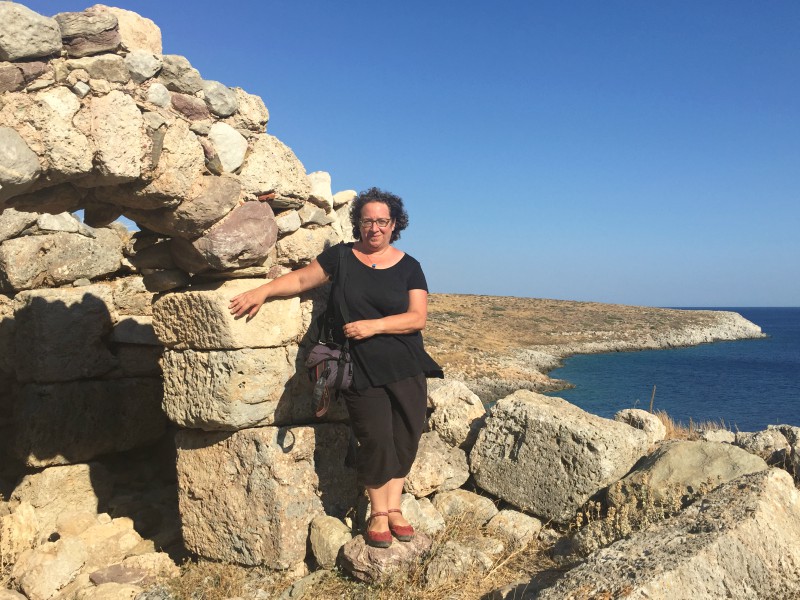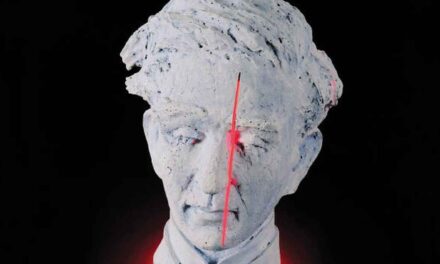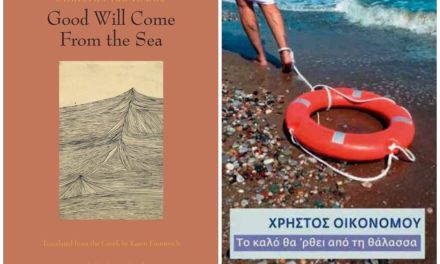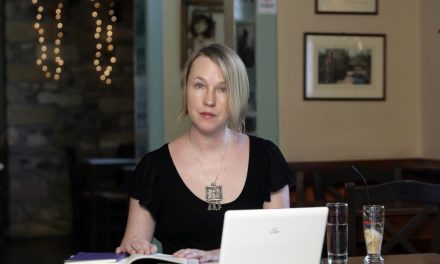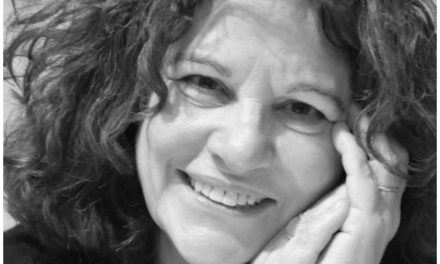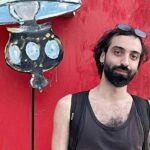Sharon Gerstel is Professor of Byzantine Art and Archaeology at the Department of Art History at UCLA. She is also the Acting Director of the UCLA Stavros Niarchos Foundation Center for the Study of Hellenic Culture (UCLA SNF), and former Associate Director of the UCLA Center for Medieval and Renaissance Studies.
Professor Gerstel’s work focuses on the intersection of ritual and art in Byzantium and the Latin East. Her books include Beholding the Sacred Mysteries (1999) and Rural Lives and Landscapes in Late Byzantium: Art, Archaeology and Ethnography (2015), which was awarded the 2016 Runciman Prize, the inaugural book prize by the International Center of Medieval Art (ICMA), and the Maria Theocharis Prize from the Christian Archaeological Society in Greece. Gerstel has also edited several books such as Viewing the Morea: Land and People in the Late Medieval Peloponnese (2012); and Viewing Greece: Cultural and Political Agency in the Medieval and Early Modern Mediterranean (2016).
Gerstel has been the recipient of numerous awards, including a J. Simon Guggenheim Fellowship (2011-2012). As an archaeologist, she has worked at numerous excavations in Greece, both as a field director and as a ceramics specialist. She currently serves on the editorial boards of the journals Hesperia, Gesta, Viator, and Zograf and of the series Studies in the Visual Culture of the Middle Ages. Her current research focuses on the intersection of music, architecture, and monumental decoration.
Professor Gerstel spoke* to Reading Greece about her interest in Byzantine History, which has prompted her to examine multiple aspects of religious and secular life, art and politics in medieval and even modern-day Greece, often with a focus on rural communities. She also described the role of the UCLA SNF Center in the Southern California Hellenic community, and its collaboration with the Los Angeles Greek Film Festival.
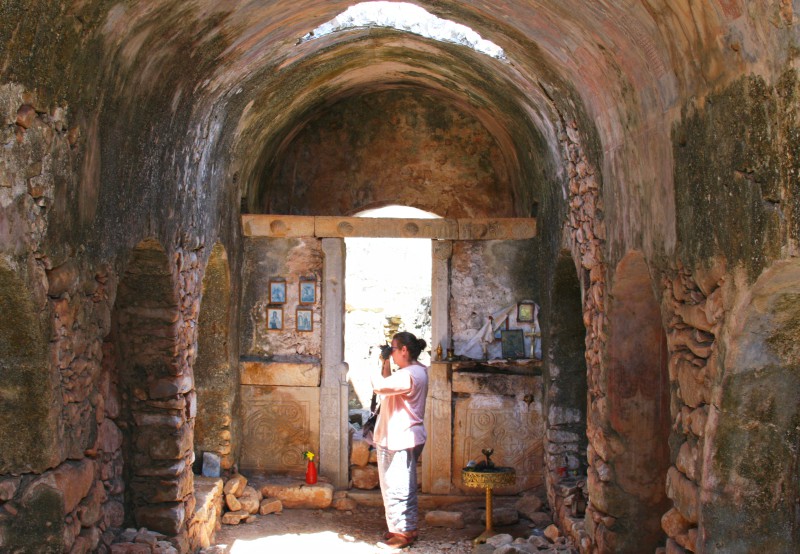 As an art historian, what was it that sparked your interest in Byzantium?
As an art historian, what was it that sparked your interest in Byzantium?
During my first class in Byzantine History, my professor broke down in tears as he described the effects of the Fourth Crusade on Constantinople. I was hooked. I couldn’t imagine why students in the United States, who learn all about the medieval West in high school, never encounter Byzantium. For me, Byzantine History opened my eyes to a culture that has long been marginalized in our studies.
In your book, for which you were awarded the 2016 Runciman Prize, you try to reconstruct the lives of the rural population in late Medieval Greece using a wide range of sources. In other books and publications, you also study various aspects of life in Byzantium, such as political agency or women’ position. Was it your research in Byzantine art that lead you to delve deeper into matters of ethnographic interest?
My work has always focused on people – medieval women, monks, farmers, etc. In my research, I try to interweave the lives of those who lived in the past with those who occupy the same spaces in the present. Even though the lives of villagers have changed considerably over the centuries, people living in small, traditional settlements still worship in the same churches, walk the same paths, use the same local words for plants and animals, and share the same core values. In the course of my work, there have been some surprising connections uncovered between the past and the present. The last name of a medieval monastic donor that I discovered in an abandoned church in Ano Poula, Mani, for example, is the same as the name of a pharmacist in Areopolis. The pharmacist was delighted to hear about this connection and I gave him photographs of someone who was likely his ancestor. These kinds of connections enrich one’s understanding of the continuities of life in rural settings and encourage modern-day Greeks to take an interest in their past. Some of my greatest insights into Byzantine rural culture have come from prolonged discussions with elderly villagers. In strange ways, these connections extend all the way to Los Angeles. The church featured on the cover of my book, the beautiful Agetria, is located on ancestral lands belonging to a family that partially lives in Southern California.
Together with Chris Kyriakakis (USC) you are co-director of the interdisciplinary research project “Bodies and Spirits: Soundscapes of Byzantium,” which concerns the acoustics of the Byzantine churches of Thessaloniki – another example of your wide range of research interests. Are you preparing any other projects as part of your research on the intersection of music, architecture, and monumental decoration?
We are preparing to continue the project as soon as the team frees itself from other obligations. In the meantime, I have been lecturing around the world about our project, including a recent lecture in Constantinople and an upcoming lecture at a Middle School in Texas! People interested in hearing more about the project can listen to a podcast at https://soundcloud.com/escape-velocity-197738573/episode-1-acoustic-museums. We have been in discussions with two monasteries and with several offices of the archaeological service about measuring sound. We look for buildings that are as intact as possible, that is, they preserve their original form of architecture, painting, and furnishings. One building of interest to me is the Church of the Dormition at Kalambaka, which preserves its medieval ambo. Several years ago, I had an amazing conversation with His Eminence Serafim, Metropolitan of Stagoi and Meteora, about the church. We sat at his desk for an hour and drew architectural renderings of dome profiles together. He was extremely interested in the project and encouraged us to measure churches at Meteora and elsewhere in his jurisdiction.
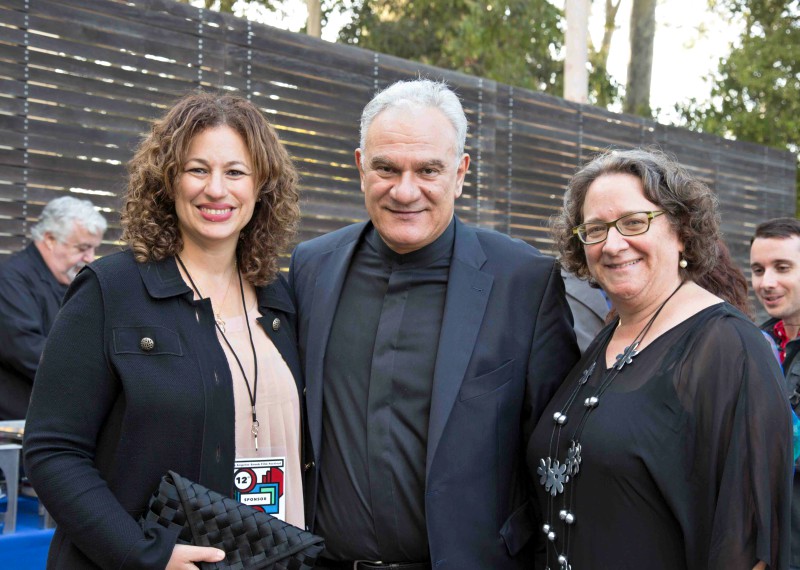 Pr. Sharon Gerstel with film director Tassos Boulmetis and CEO of Earth Friendly Products Kelly Vlahakis-Hanks
Pr. Sharon Gerstel with film director Tassos Boulmetis and CEO of Earth Friendly Products Kelly Vlahakis-Hanks
You are also the Acting Director of the UCLA Stavros Niarchos Foundation Center for the Study of Hellenic Culture; according to its mission statement, it aims to become “a vibrant cultural hub for the sizable Los Angeles Greek community”, in addition to its teaching and research mission. How would you describe its purpose? As part of its Faculty Advisory Committee, which are your aspirations for the future?
Our Center is looking at ways to think broadly about Hellenism and the connection of Greece to other cultures. An upcoming program on the Greek Village, for example, begins with ancient villages, before turning to Byzantine villages. The program incorporates anthropologists looking at traditional village culture and even a lecture on the Greek-American village. Like many of our programs, the symposium concludes with two short films, one about a village restoration project in Crete, and another about a church restoration project in the Mani. This deep engagement in Greece’s past – not only the ancient world, but what came after the so-called Golden Age – is critical to our Center. What is unusual about our Center is its mandate to engage with the Southern California Hellenic community. Many of our programs are intended to attract members of the local community and ask them to think more broadly about Hellenic topics. An upcoming performance that we are sponsoring of the Greek Rebetiko Trio, for example, focuses on the Yedikule in Thessaloniki. In addition to hearing music stimulated by the horrific conditions in the prison, a Greek actor will be performing dramatic readings from letters of the prisoners, and the audience will be seeing photos from the interior of the prison. Thus, we are asking the community not only to hear the music, but to step into the prison and hear the words of those locked behind its doors. All of our events are intended to engage the community at a number of levels – intellectually, emotionally, and through the senses. We hope our events offer something new and impactful. We are also reaching out into the community through collaborations with local organizations. We have held several events at St. Sophia Cathedral, and have collaborated on events with the Hellenic University Club, the Greek Heritage Society, and the Los Angeles Greek Film Festival. These collaborations enrich both the university and local communities.
What was the nature of the UCLA Stavros Niarchos Foundation Center’s recent collaboration with the 12th Annual Los Angeles Greek Film Festival? Is it set to continue in the future?
Our first collaboration with the Los Angeles Greek Film Festival brought UCLA alumnus Tassos Boulmetis back to his alma mater for the US premier of 1968. The reception of the film was so positive that UCLA successfully applied to the Onassis Foundation to bring Boulmetis to teach two courses in fall 2019. As Onassis Distinguished Visiting Professor, Boulmetis will be offering courses in the Department of Classics and in Theater, Film and Television. While in Los Angeles, he will also be screening 1968 for the Hellenic Society of Constantinople. We have already established June 3, 2019, for the UCLA opening of the Los Angeles Greek Film Festival in the Bridges Theater, and we are already in discussions about how to make this opening even more special than the last one. Our collaboration with the LAGFF extends past the actual days of the festival, however. The Festival will participate in our upcoming symposium, The Greek Village, and we have hosted other screenings on campus throughout the year, something we plan to continue. Considering our location in Los Angeles, our collaboration with the Los Angeles Greek Film Festival offers exciting opportunities for the campus and local community. Hosting Greek films and filmmakers on the UCLA campus provides an opportunity for students and faculty members to be exposed to Greek films, actors, screenwriters, costume designers and to think about opportunities to collaborate with their Greek counterparts.
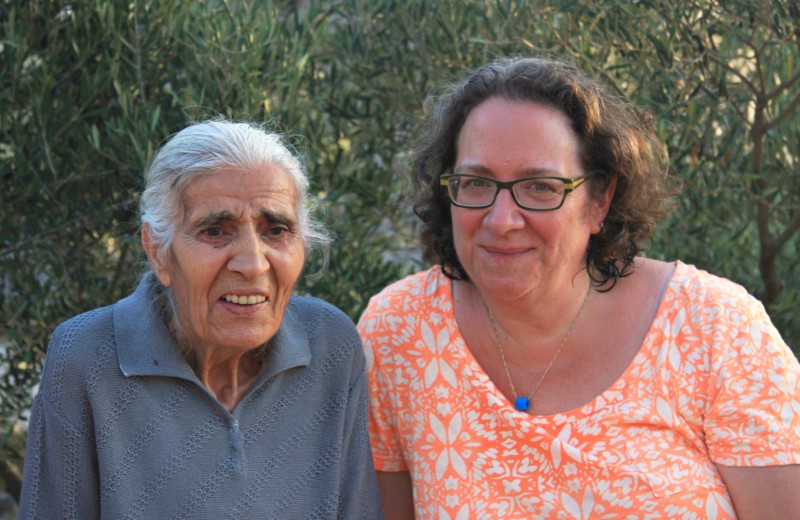 Pr. Sharon Gerstel with Metaxia Anapliote
Pr. Sharon Gerstel with Metaxia Anapliote
In your opening for Rural Lives and Landscapes in Late Byzantium you write that you tried to view the Greek landscape “from the heart”. Would you like to elaborate on that?
My work for the book involved interviewing many elderly villages in the Mani, and these interactions profoundly changed my work as a scholar. The book opens with the story of an elderly Maniatissa, Mrs. Kanella Georgopoulou Kassi, who led me over very rough landscape to find a tenth-century church that was standing in isolation. Throughout our walk, we chatted about her village and about life in the Mani. I had occasion to visit her one time after our initial walk. My last interaction with her was to visit her grave, which led to a long journey of trying to discover where her bones had been placed after they were disinterred. My current project on the church of Hagioi Theodoroi, Vamvaka, began with a conversation with another Maniatissa, Metaxia Anapliote, who visited the eleventh-century church delay to fulfill a vow she had made to the saints. This beloved Maniatissa died tragically last February. I am currently trying to raise funds through a non-profit to restore the church of Hagioi Theodoroi, which would be a tribute to Metaxia and to other villagers in the Mani who have valiantly tried to preserve their cultural patrimony in very difficult economic times. I have been very blessed to be allowed to become a part of the fabric of the Mani – to respect the hard work of so many who live there, to be part of their conversations and be entrusted with their concerns, and to admire their intelligence and fortitude. I think it would be wonderful if every American child could be part of such a society, even temporarily. One program the Center is considering is to bring American high school children to live in a Greek village for several weeks in order to experience the profound love that villagers have for the land, their innate sense of philotimia, and their close family structures.
*Interview by Nefeli Mosaidi
Read also via Greek News Agenda: Reading Greece | Professor Gonda Van Steen on her lifelong fascination with all things Greek; Kevin Andrews’ journey into Greece;
Read also via Filming Greece: 12th Annual Los Angeles Greek Film Festival: Bringing Greek Cinema at the heart of Hollywood; Film Director Tassos Boulmetis: Strangely Enough, the Crisis Promotes Greek Cinema; Greek Film Festivals of the Diaspora: The Old and the New

